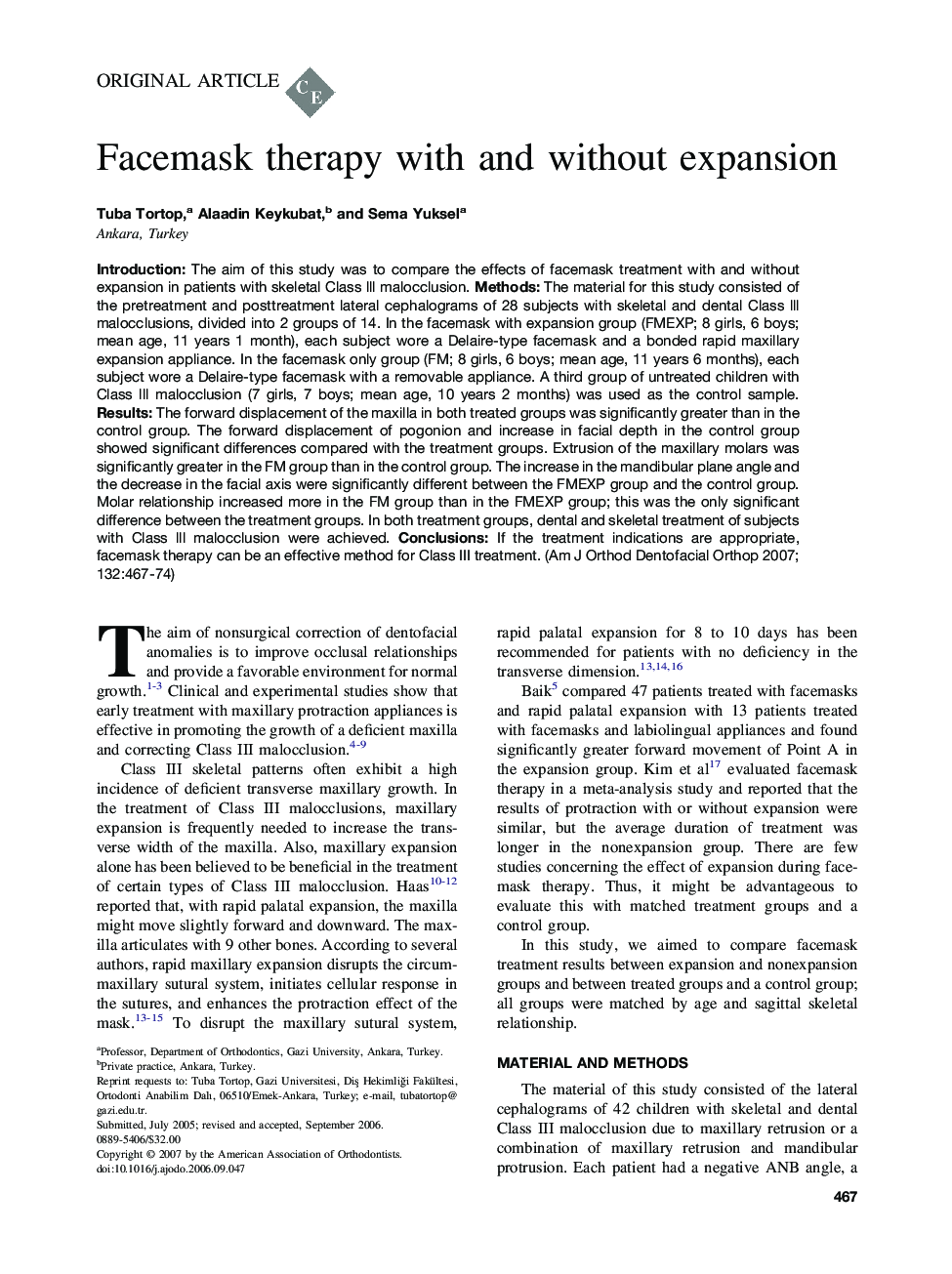| Article ID | Journal | Published Year | Pages | File Type |
|---|---|---|---|---|
| 3119796 | American Journal of Orthodontics and Dentofacial Orthopedics | 2007 | 8 Pages |
Introduction: The aim of this study was to compare the effects of facemask treatment with and without expansion in patients with skeletal Class lll malocclusion. Methods: The material for this study consisted of the pretreatment and posttreatment lateral cephalograms of 28 subjects with skeletal and dental Class lll malocclusions, divided into 2 groups of 14. In the facemask with expansion group (FMEXP; 8 girls, 6 boys; mean age, 11 years 1 month), each subject wore a Delaire-type facemask and a bonded rapid maxillary expansion appliance. In the facemask only group (FM; 8 girls, 6 boys; mean age, 11 years 6 months), each subject wore a Delaire-type facemask with a removable appliance. A third group of untreated children with Class lll malocclusion (7 girls, 7 boys; mean age, 10 years 2 months) was used as the control sample. Results: The forward displacement of the maxilla in both treated groups was significantly greater than in the control group. The forward displacement of pogonion and increase in facial depth in the control group showed significant differences compared with the treatment groups. Extrusion of the maxillary molars was significantly greater in the FM group than in the control group. The increase in the mandibular plane angle and the decrease in the facial axis were significantly different between the FMEXP group and the control group. Molar relationship increased more in the FM group than in the FMEXP group; this was the only significant difference between the treatment groups. In both treatment groups, dental and skeletal treatment of subjects with Class lll malocclusion were achieved. Conclusions: If the treatment indications are appropriate, facemask therapy can be an effective method for Class III treatment.
